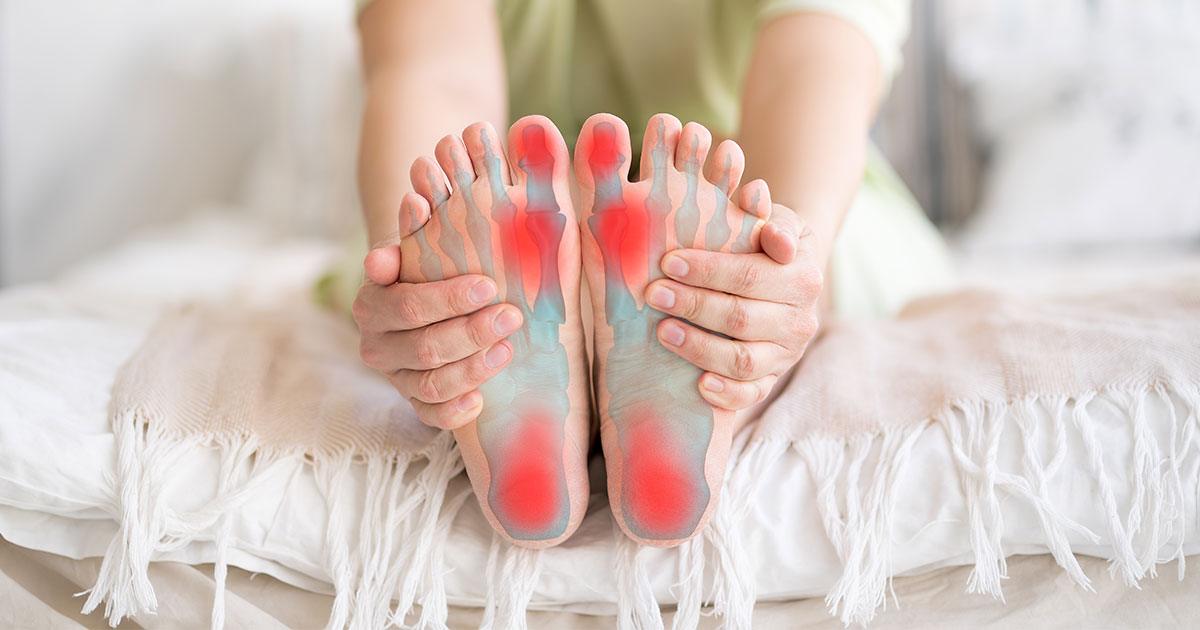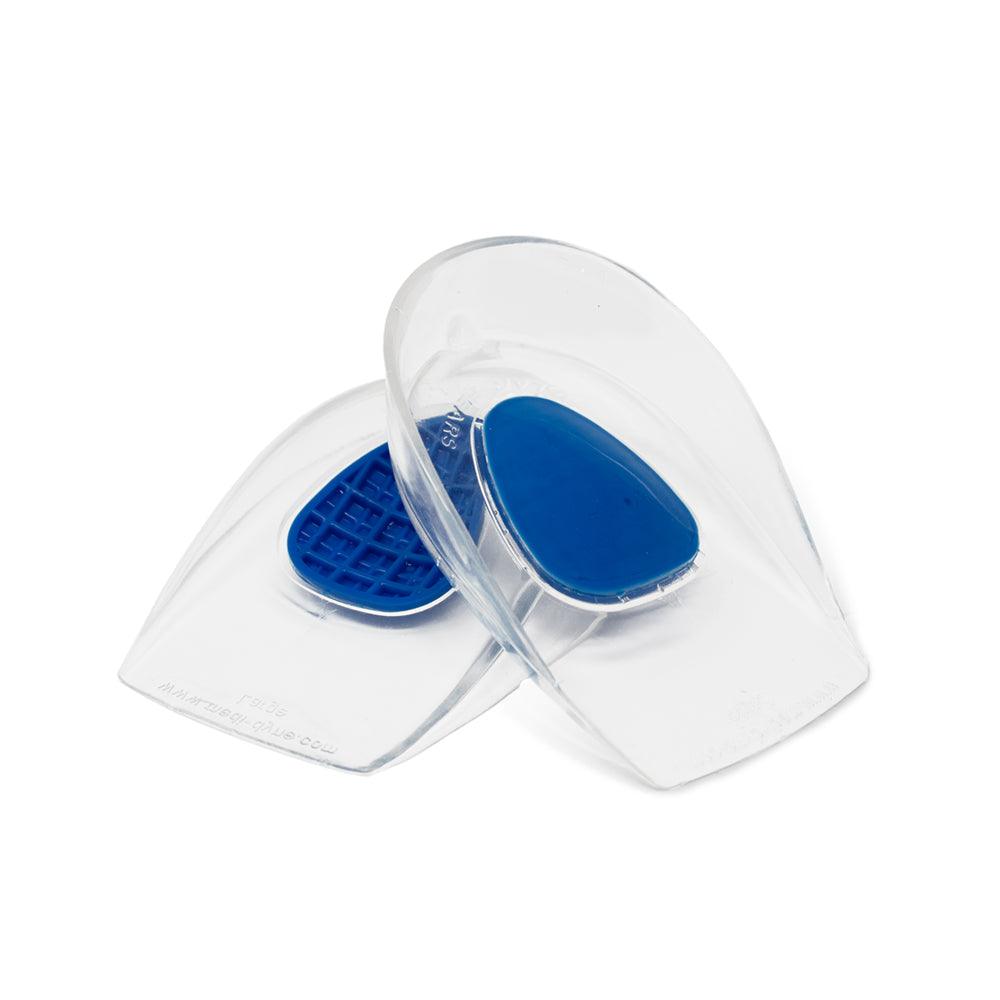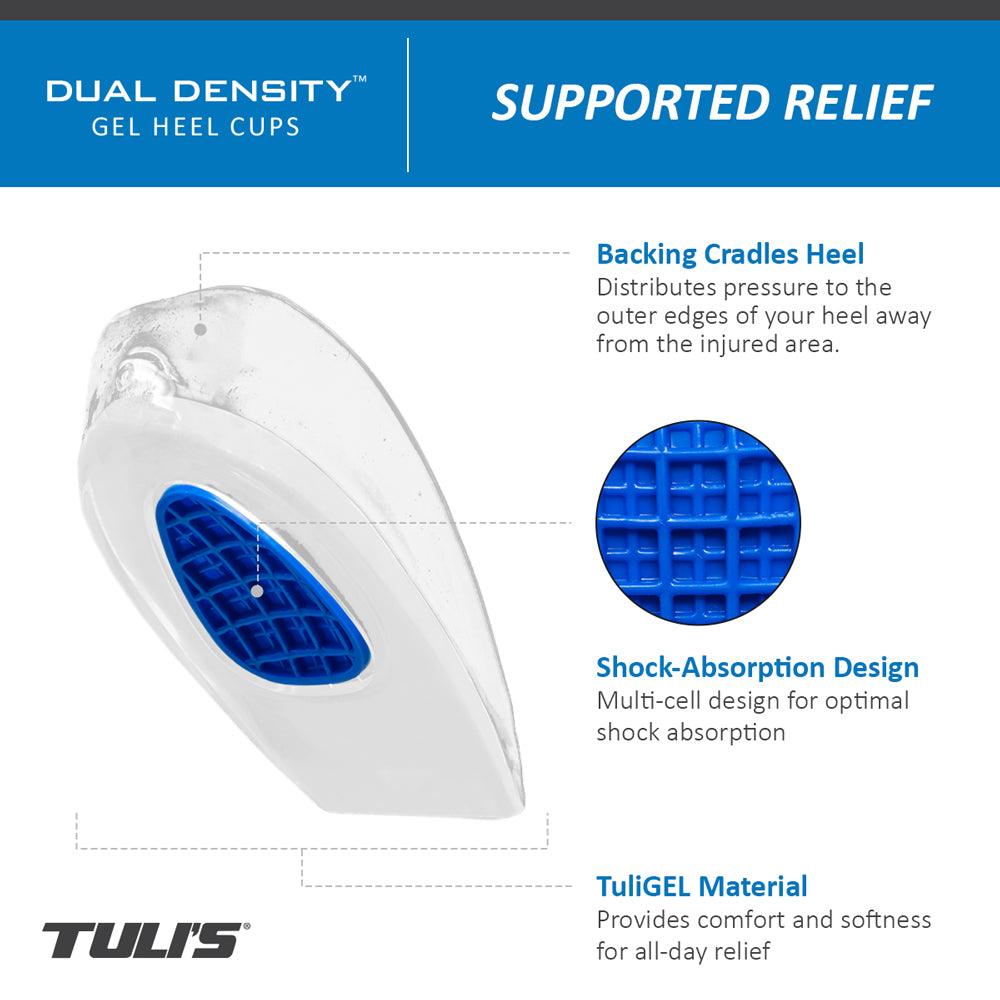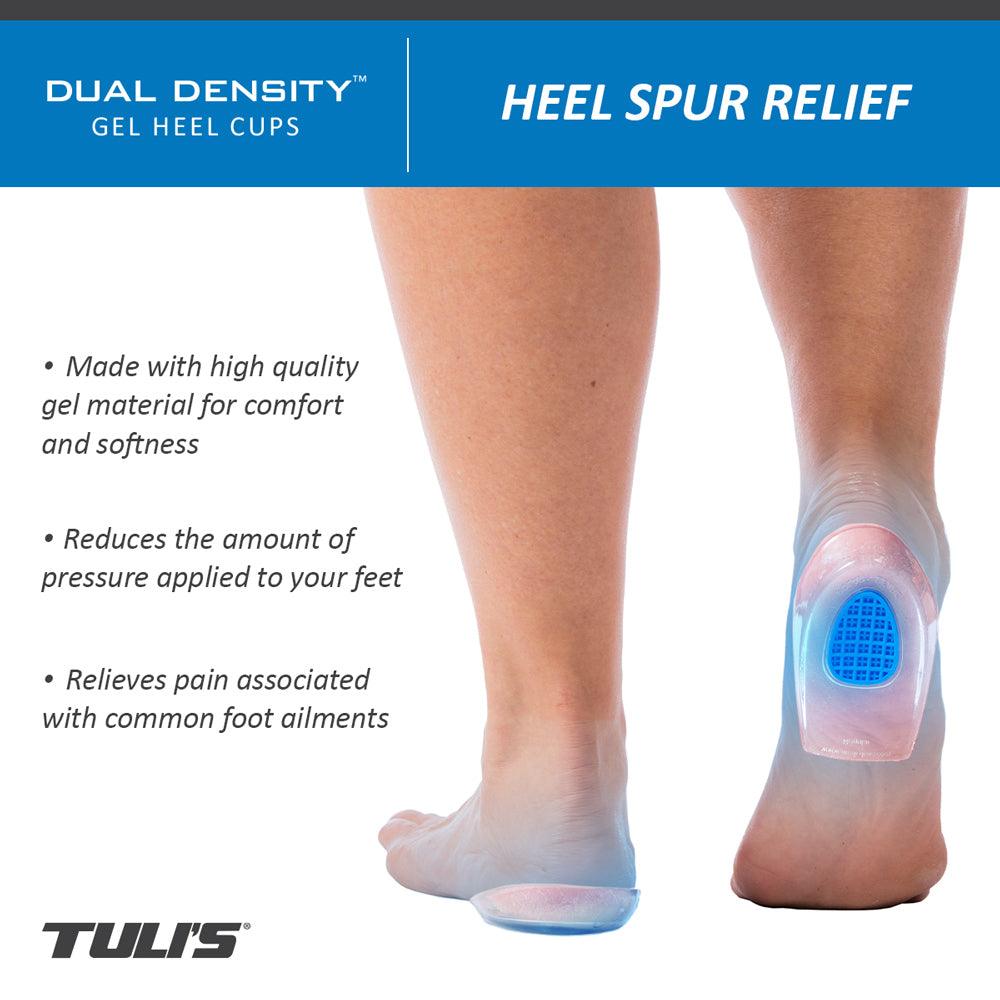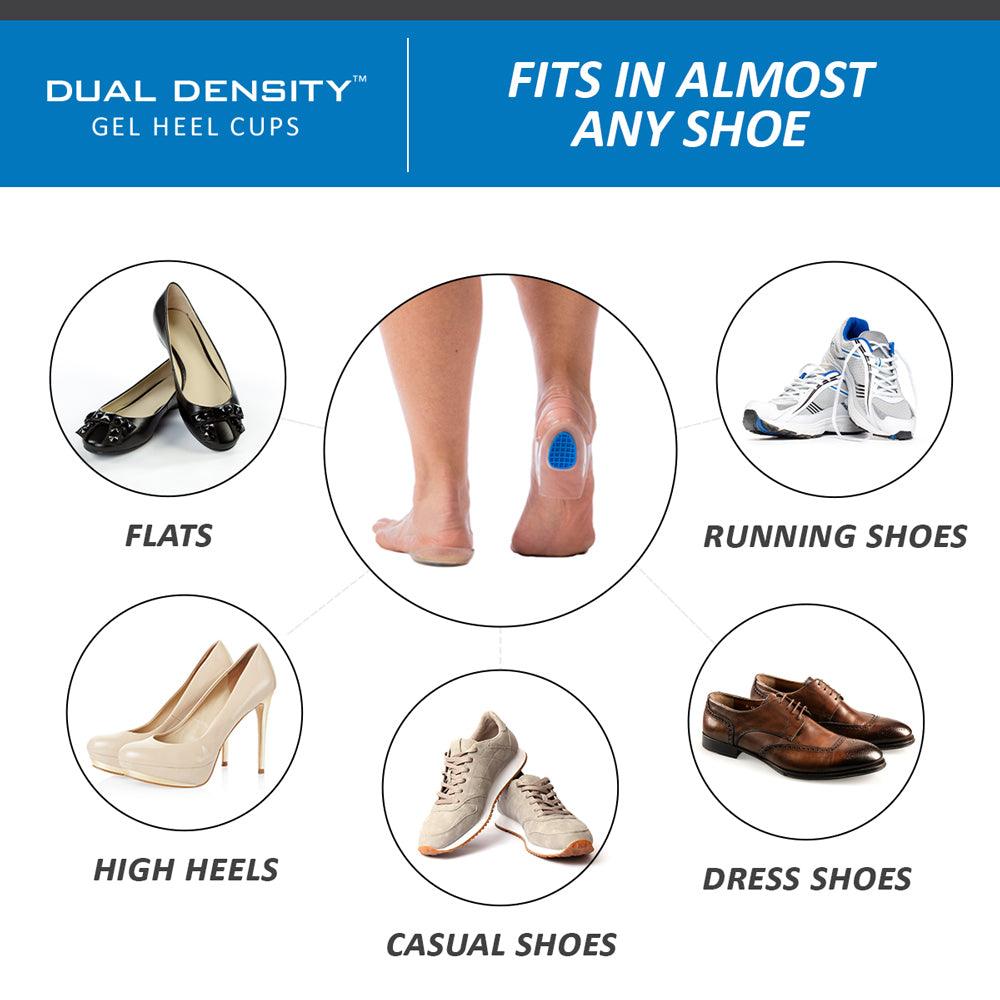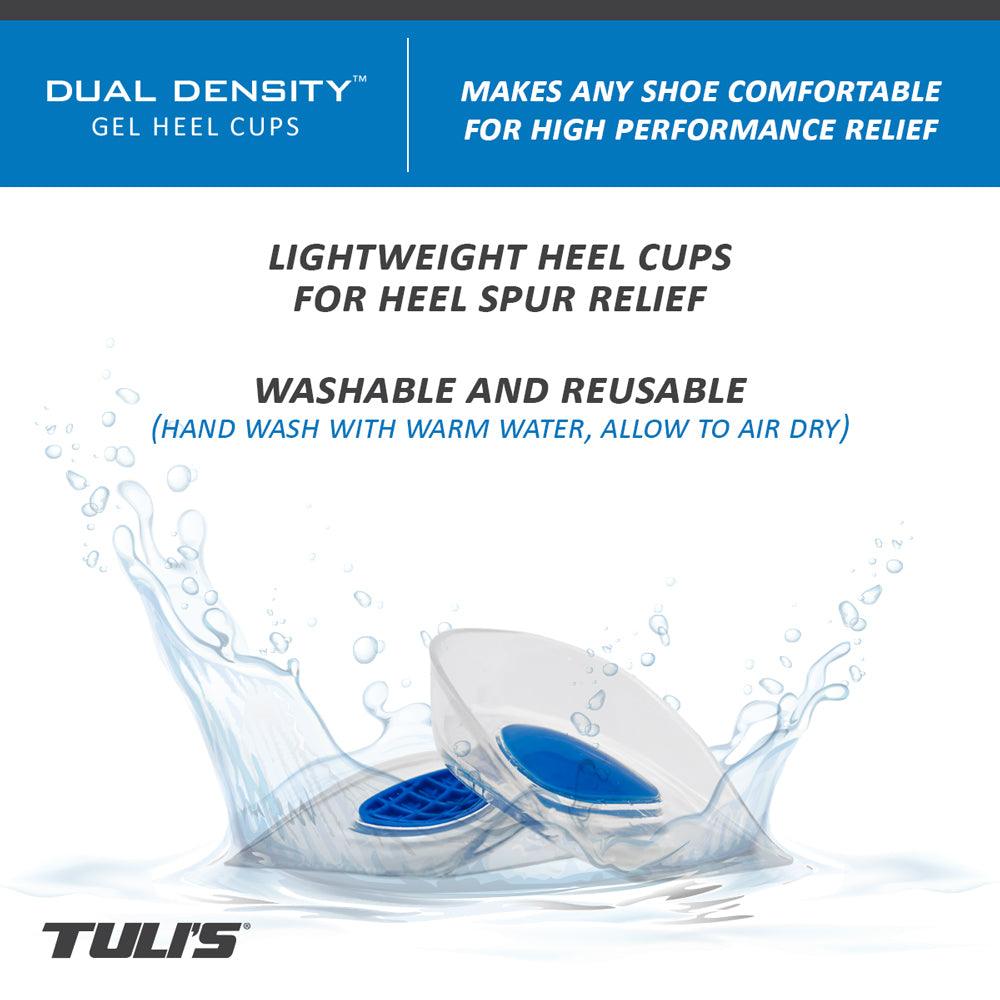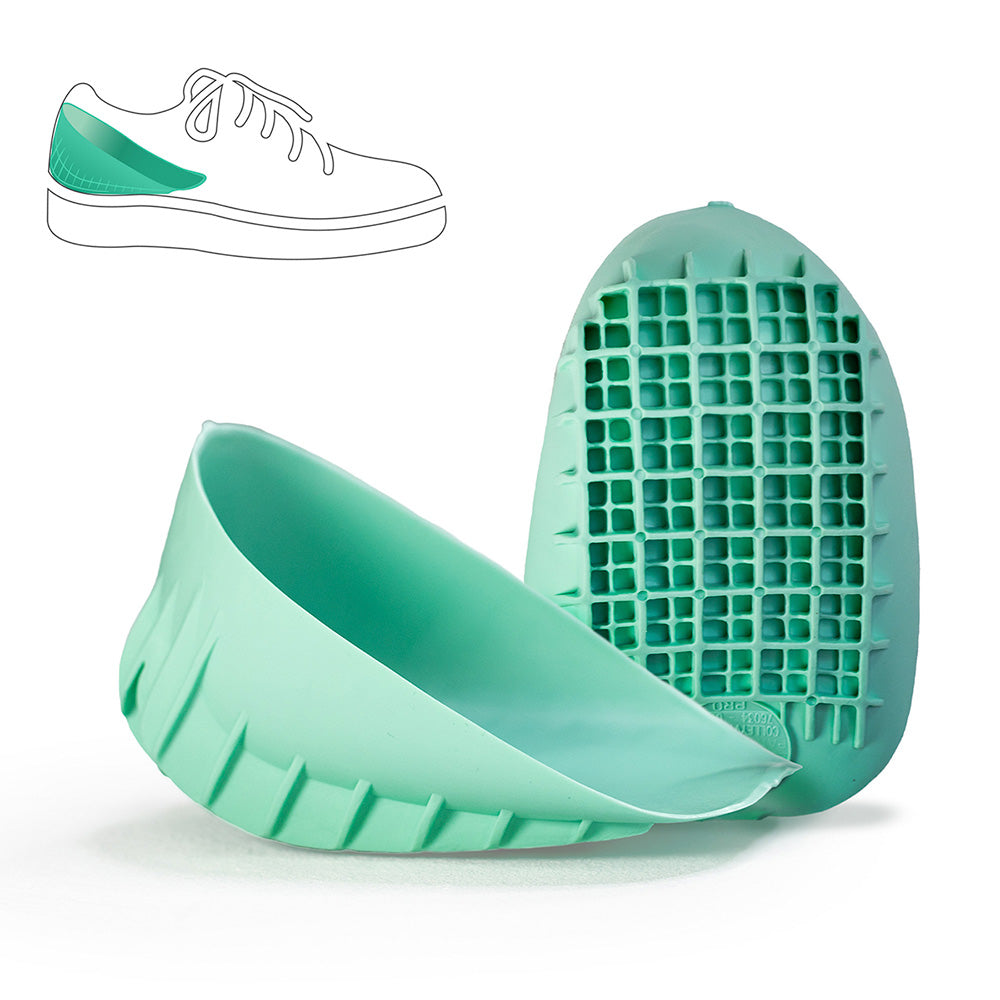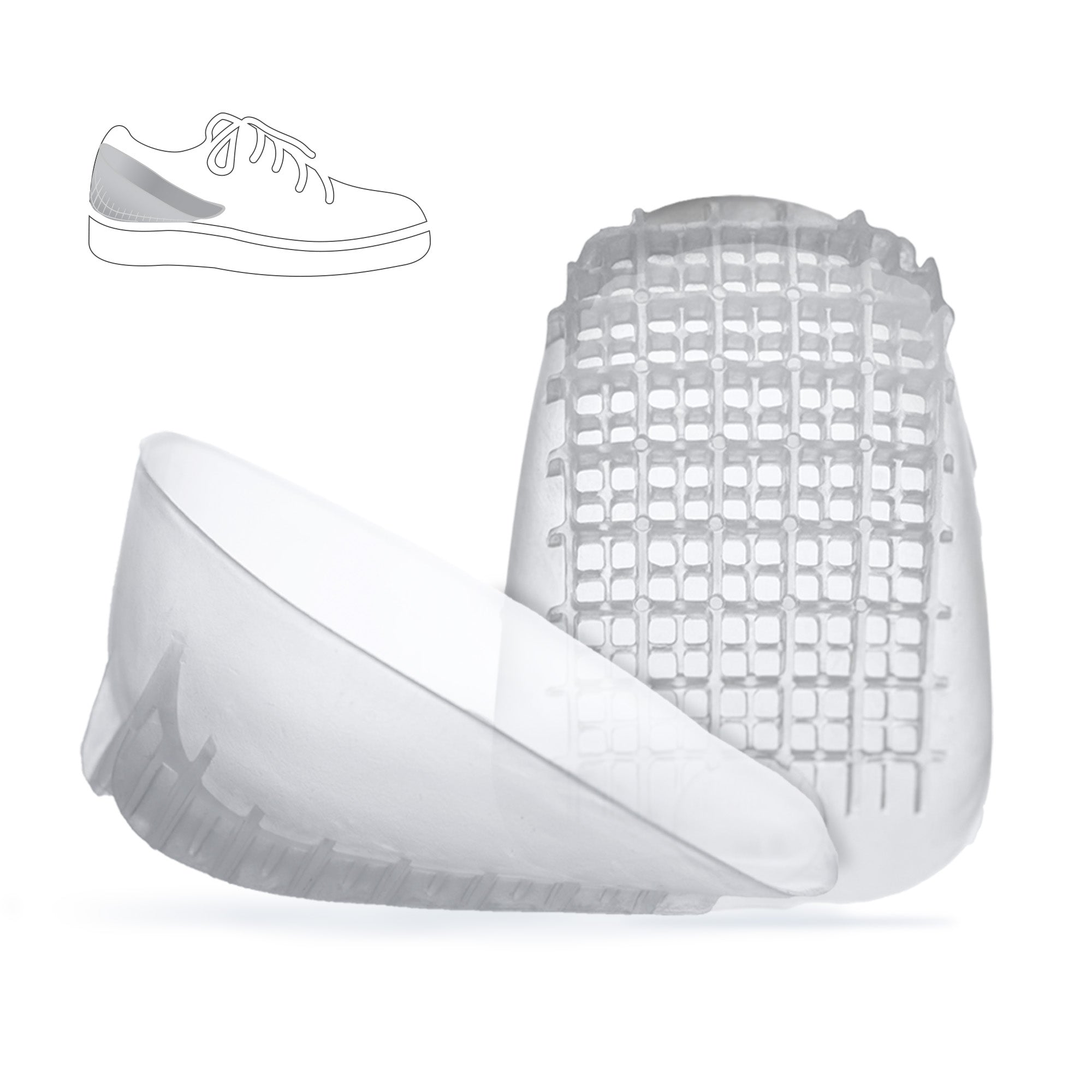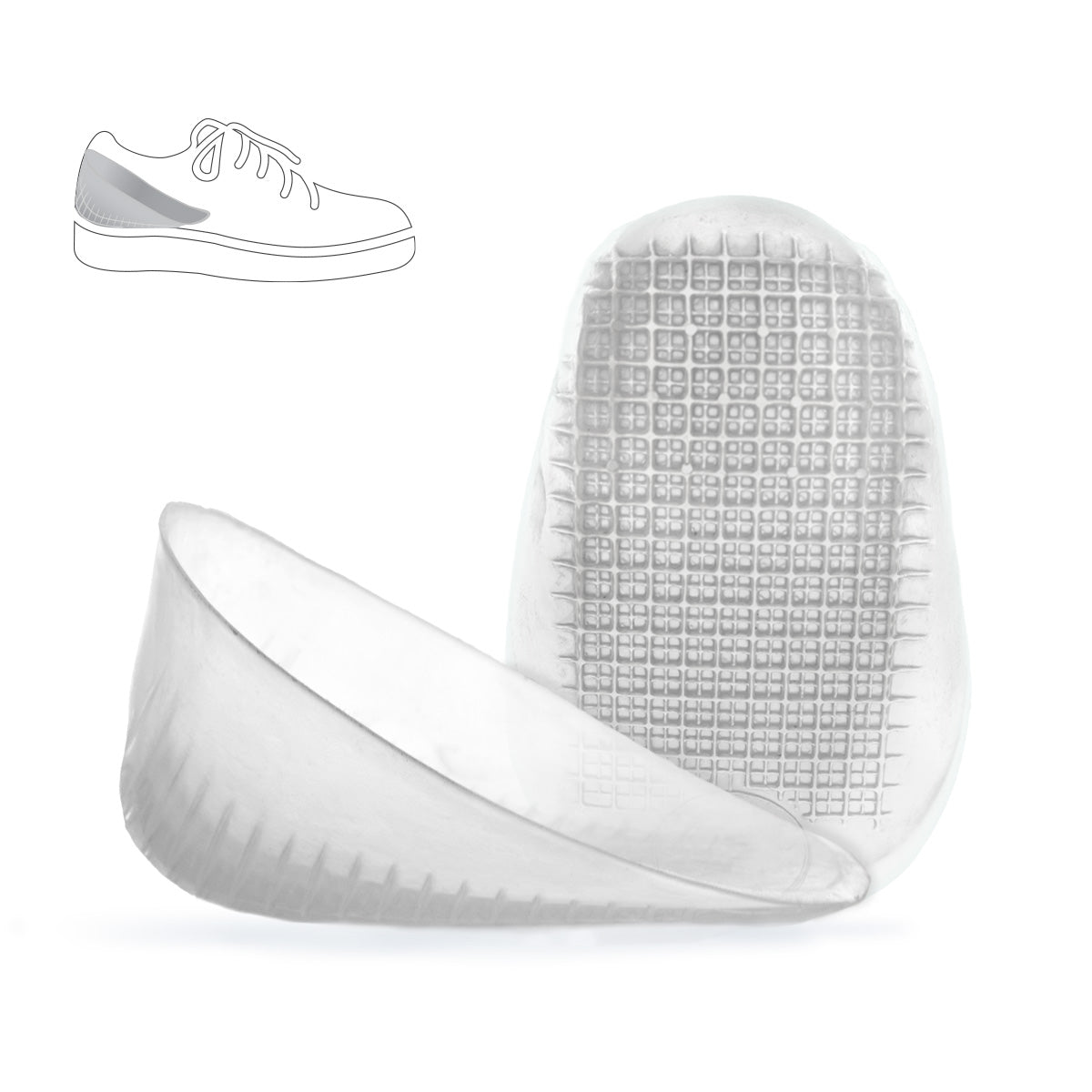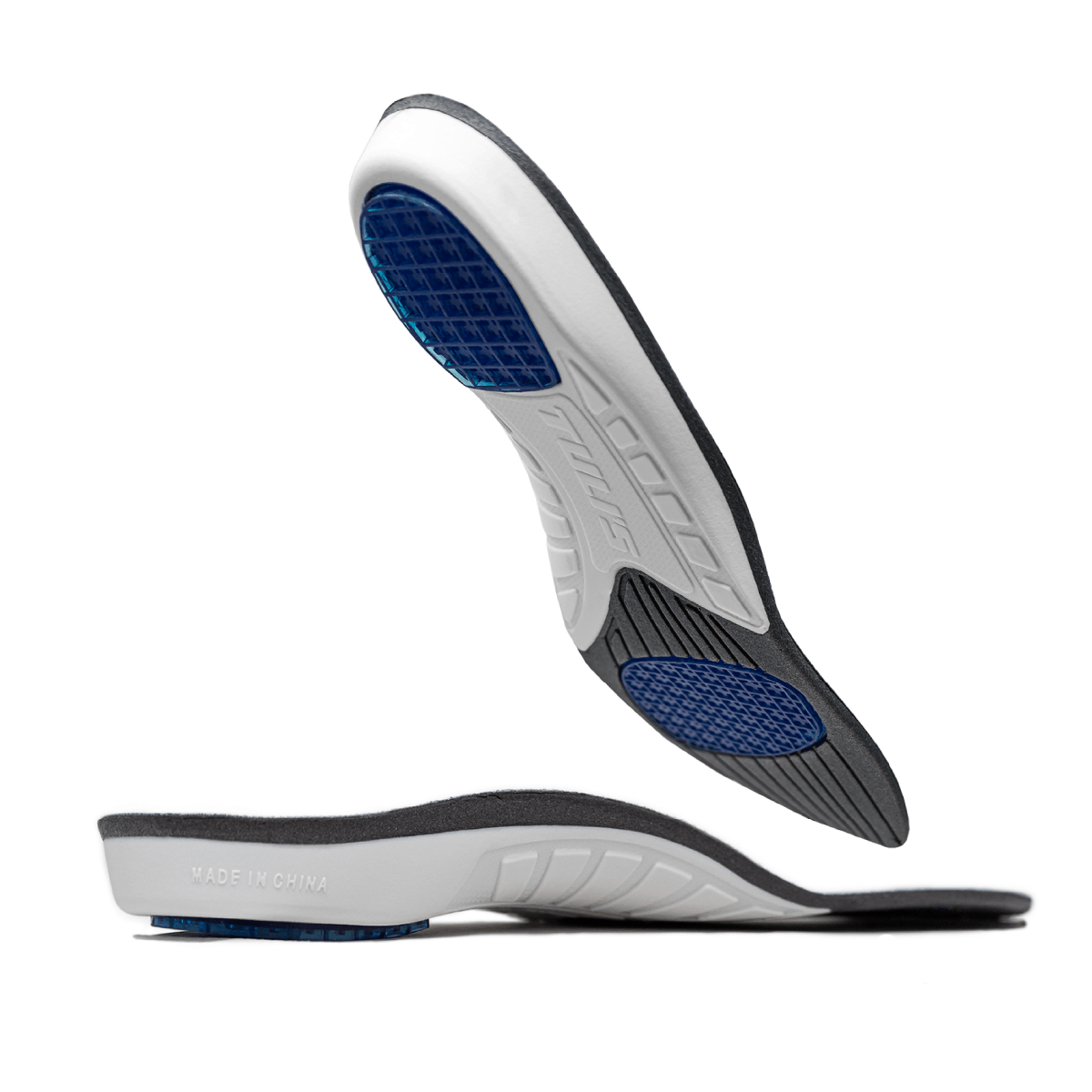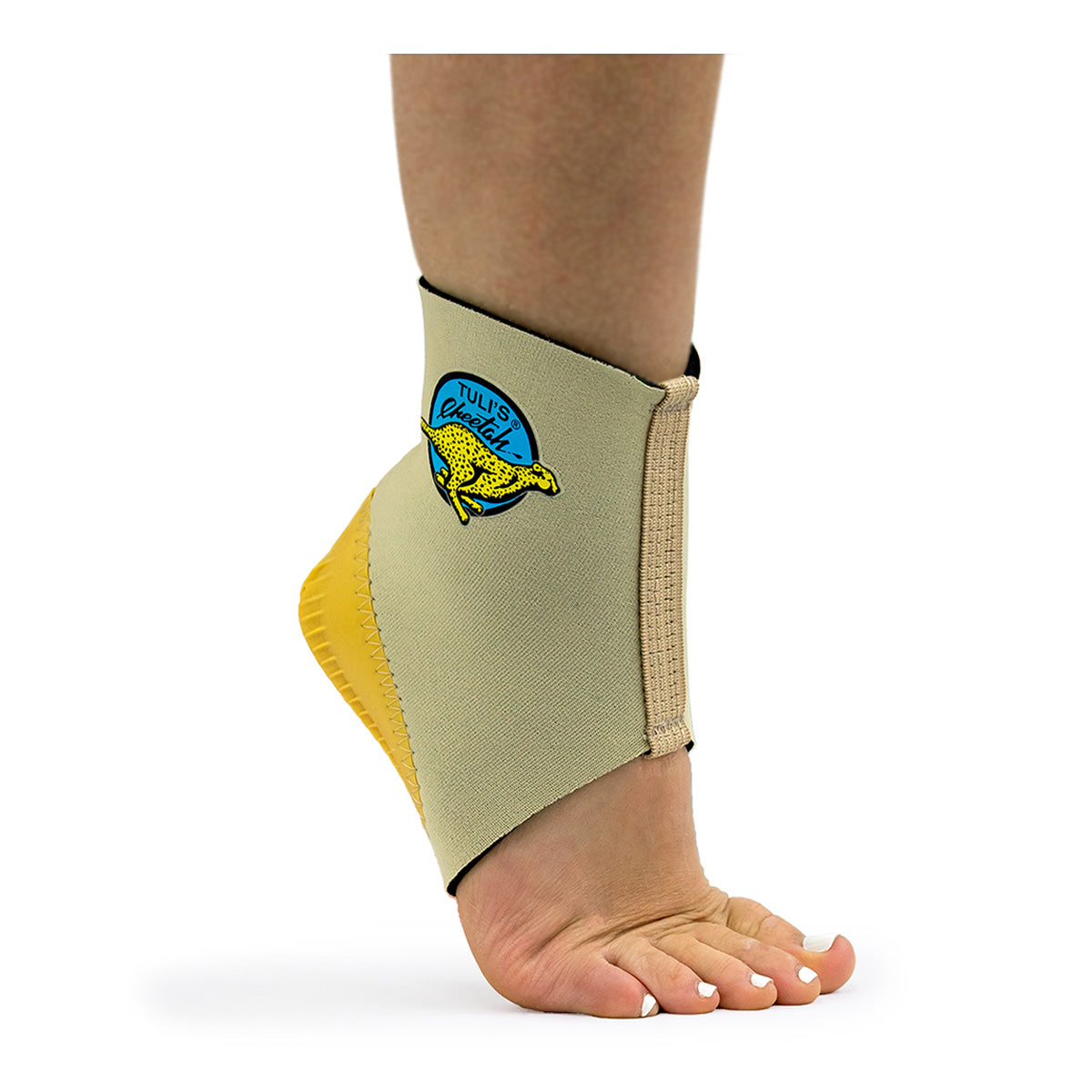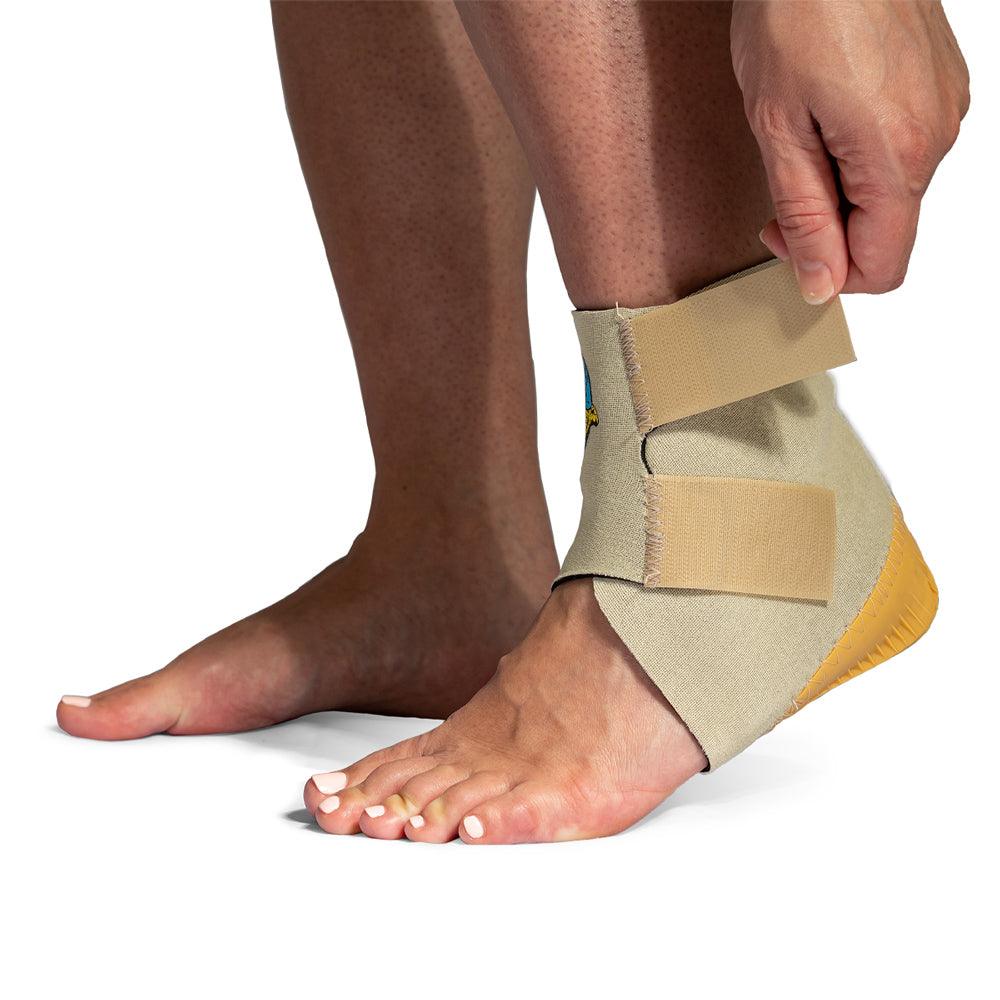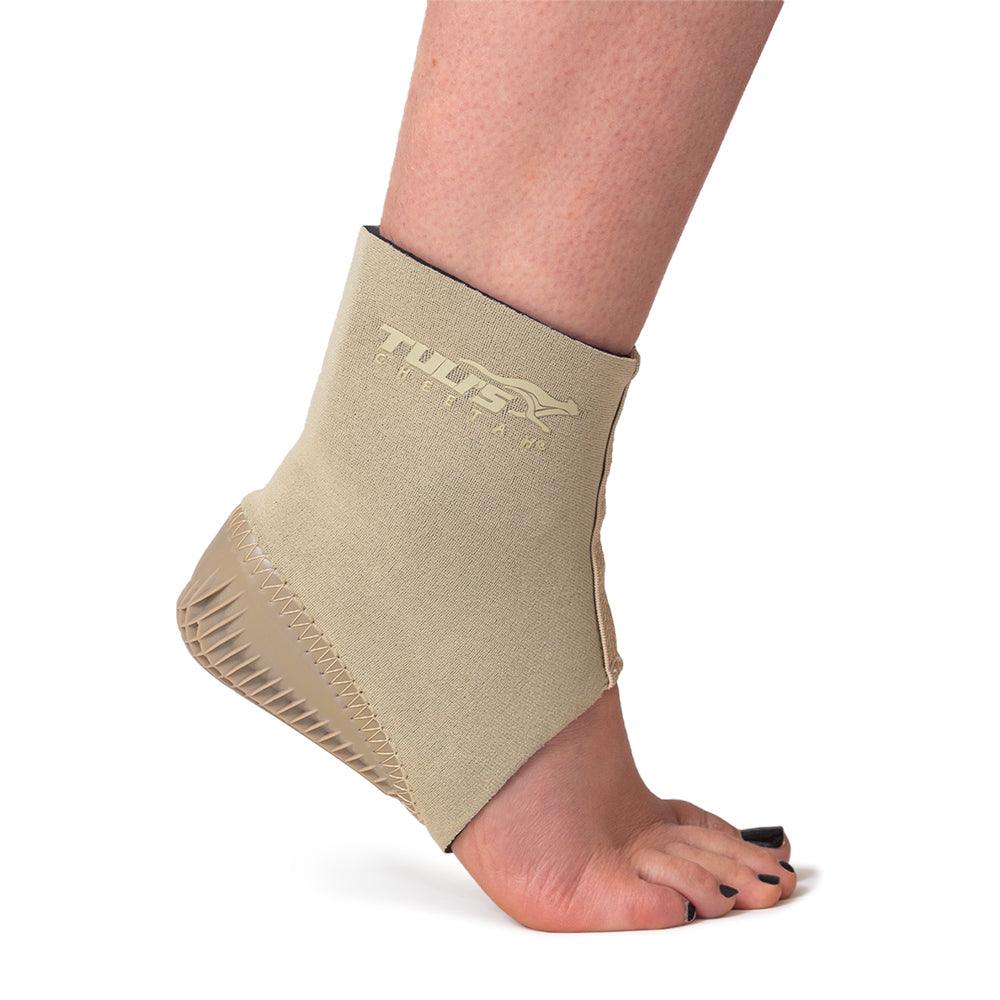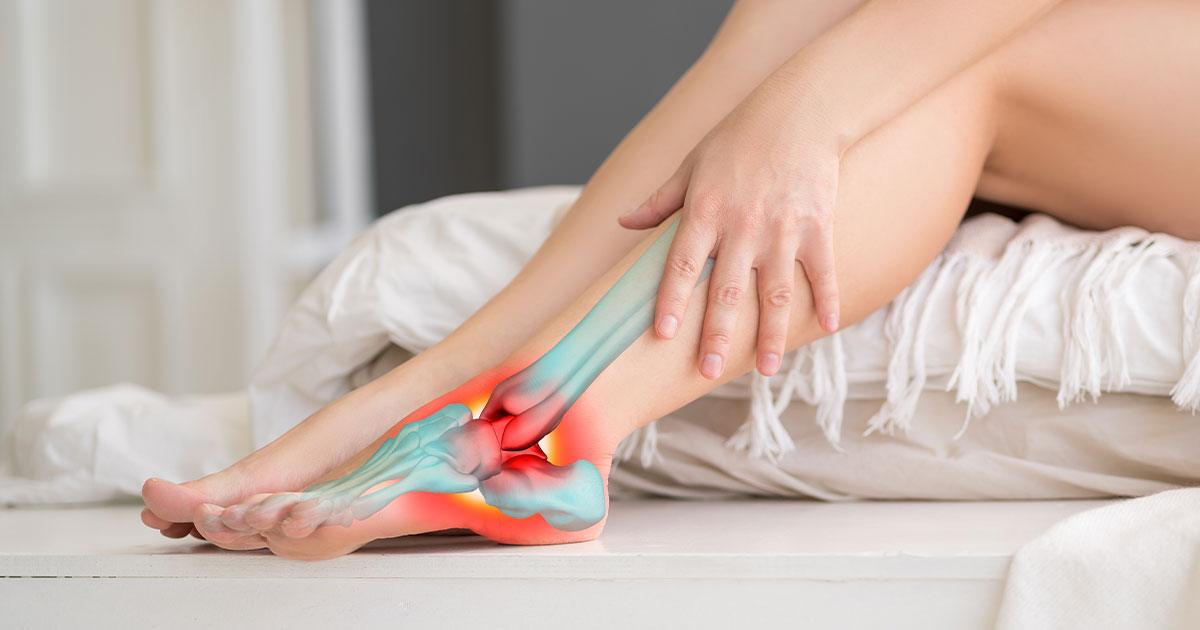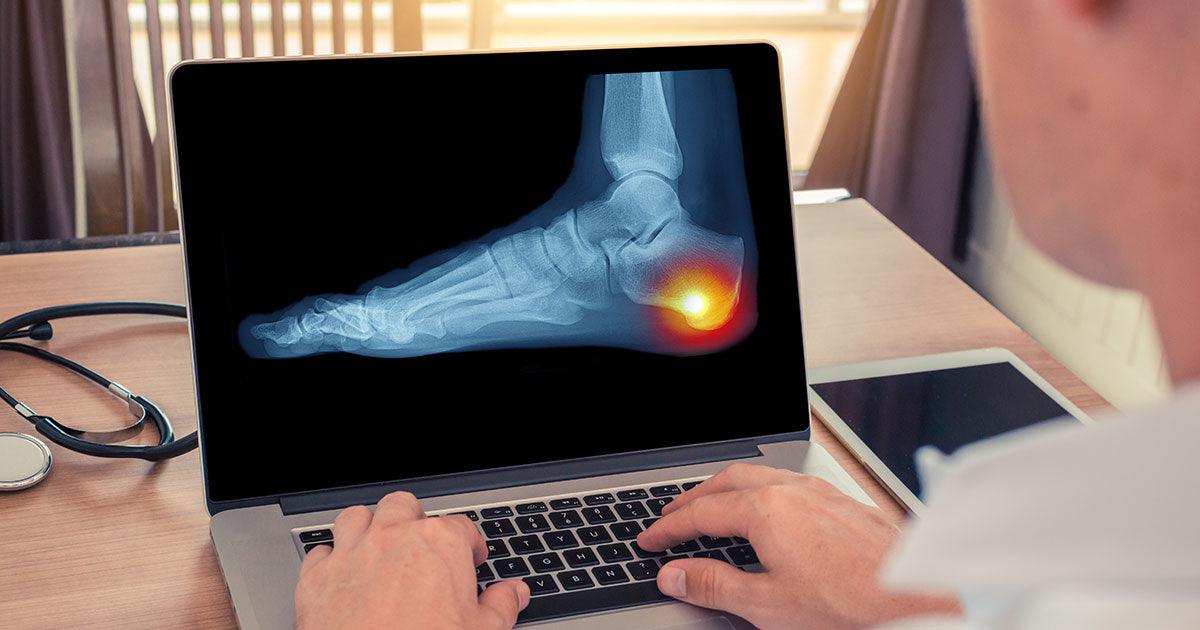If you notice pain when you put pressure on your heels, heel spurs could be the culprit. It may be tempting to ignore the bony growths that develop under your feet, but heel spur pain won't go away on its own.
Heel spurs develop over time due to repetitive movements or activities that put pressure on the foot. Since they don't appear overnight, it's also not possible to alleviate the pain they cause instantly. Recovering from heel spurs is a process.
Fortunately, the more you know about heel spurs the more capable you will be of finding the heel spur treatment that works for you. Treatments offer a way for you to deal with heel spurs so you don't miss out on activities you enjoy. Plus, many treatments don't require invasive procedures and can offer real improvement over time.
What Are Heel Spurs?
Put simply, calcium deposits that jut out from under your heel are heel spurs. You may not notice them or they may cause pain that makes putting pressure on your feet difficult. Heel spurs can occur on their own, but it's also possible to have them combined with other issues related to your bones, joints, or muscles.
Heel spurs and plantar fasciitis often exist simultaneously. Plantar fasciitis occurs when the band of tissue running along the bottom of your foot becomes inflamed. That band of tissue connects the heel bone to the toes, and this can cause pain to radiate throughout your foot.
What Causes Heel Spurs?
You may not be able to definitively pin down the cause of your heel spurs, but there are some common reasons that they occur. They include:
- Wearing poor quality shoes
- Being overweight
- Walking gait problems
- Running, jumping or jogging, especially on concrete or other hard surfaces
- Having high arches
- Having flat feet
- Certain health conditions, such as diabetes
- Aging
- Being female
While not all of these causes can be prevented, others are within your control.
Exercising is great for your health, but you need to make sure to wear high-quality shoes so you don't increase your risk of developing heel spurs.
Keep your weight in check because being overweight or obese puts an extra strain on your feet. This can cause heel spurs to develop. It's also important to be aware of how much you are on your feet throughout the day. While staying active is part of a healthy lifestyle, jobs that require constant standing will put you at a higher risk for problems with your feet.
What Are the Symptoms of Heel Spurs?
It's possible to have heel spurs and experience no symptoms. However, once symptoms start you will notice and want to seek heel spur treatment. Sharp pain in the bottom of your foot will likely be your introduction to heel spurs. Though the pain may get dull as the day goes on, stabbing pain will likely reoccur when you wake up in the morning.
Since heel spurs and plantar fasciitis often impact each other, you will likely develop inflammation around the heel spur that can cause pain all the way through your foot.
Very large heel spurs may even protrude far enough out for you to see the outline. Your heel may feel warm or look inflamed, and walking without shoes can become nearly impossible.
Any of these symptoms warrant treatment because pain from heel spurs won't go away on its own.
How Do I Get the Proper Diagnosis?
When you go see a doctor due to the pain in your foot, you will likely be asked questions about your pain level and where your pain is on your body. Make sure to tell your doctor if you have arthritis since this can increase your risk of heel spurs.
After your doctor asks about your medical history and does a physical exam, you will probably have an X-ray or ultrasound. This allows your doctor to check for heel spurs so a proper diagnosis can be given. It can also help rule out other causes of the pain, such as a fracture or arthritis.
Heel spurs can be related to plantar fasciitis, osteoarthritis or trauma to the foot, so your doctor many want to perform additional tests to make sure any underlying issues are addressed and treated.
What Are Treatments for Heel Spurs?
Heel spur treatment doesn't have to involve surgery. It's wise to start with the least invasive options when seeking treatment, and there are quite a few to choose from. You can also try more than one treatment at a time and see if they complement each other and lessen your pain.
1) Appropriate Rest:
It seems obvious that if your feet hurt when you stand you should sit and rest. However, it's hard for many people to give up activities they love so they can heal.
Though rest and patience are both important if you want heel spur relief, you don't have to be completely sedate. Many people experience the sharpest pain when they get out of bed in the morning after not being on their feet all night. The same is true if you sit for a long period of time and then suddenly stand. The stabbing pain that people associate with heel spurs is likely to strike at this time.
It's fine to keep moving in a reasonable way as long as you take breaks. You can even vary your activities so you put less pressure on your feet. Try swimming or biking instead of long walks or jogs while you are trying to heal. Whatever you choose, make sure you don't overdo any activity while trying to recover. Listen to your body and don't stay on your feet for too long.
2) Quality Shoes:
Investing in quality shoes is one of the best ways to avoid and treat heel spurs. The right shoes can support a high arch and offer extra support that makes it comfortable for you to walk again.
Look for shoes that have a slightly elevated heel so the impact on the back of your foot is lessened when you move. Replace your shoes frequently so you they don't get too worn down to help. Shoes that are old or torn can't protect your feet the way they should.
3) Heel Cups:
Heel cups are specifically made for people suffering with heel spurs. Heel cups can be inserted into your shoes so pressure moves away from the spurs and to the outer part of your foot.
Adding heel cups to the right shoes gives you added protection whether you are simply taking a walk or participating in an extreme sport. It's easy to replace your heel cups when needed because they aren't pricey or difficult to remove. They are a simple solution that can offer almost immediate relief.
4) Cold Compresses:
Cold is better than heat when it comes to heel spurs. Place a cold compress where you hurt to lessen the inflammation and reduce pain in that area. Make sure to place a cloth or other barrier between your skin and the cold compress. Keep the compress on for 5-10 minutes before removing it, and repeat this process throughout the day.
If you fear getting up in the morning because of the pain you feel when your feet touch the ground, get some ice therapy slippers. These slippers go in your freezer and then slide onto your feet over a pair of thin socks. This will keep you moving in the morning while also reducing the pain in your feet. Put them on during the day when you want to stay on your feet but also need the relief cold has to offer.
5) Proper Stretching:
The right stretches can reduce pressure on your heel spur, and this can decrease the pain you experience. Focus on stretching your calves and the muscles around your toes. Flex your feet gently, use a wall or a calf stretcher to stretch your calves, or roll a small ball along the bottom of your foot.
You can stretch as often as you want throughout the day, but make sure to stretch first thing in the morning and before you plan to be on your feet for a while. It's also essential to stretch before working out, even if you are simply going for a short walk.
6) Physical Therapy:
A trained physical therapist can teach you exercises that will lessen inflammation and help you walk without pain again. When stretching on your own isn't enough, a physical therapist can come up with a plan that is tailored to your particular needs. Your physical therapist may also use other techniques to help you feel better.
Cryoultrasound is a common tool used by physical therapists. It combines the power of cold with electromagnetic energy. It's a proven way to treat both heel spurs and plantar fasciitis. Relatively painless and cost efficient, cryoultrasound is considered a great discovery for those who suffer with foot pain.
7) Night Splints or Night Socks:
Night splints or night socks gently stretch your feet while you rest, and this can reduce the amount of pain you experience when you get up in the morning. You can also keep your feet slightly elevated while you rest to help with blood flow.
After removing your night splints, stretch your feet before stepping on the floor. These simple approaches can offer heel spur relief first thing in the morning.
There are also treatments that are more invasive but could prove necessary if pain persists.
8) Over-the-Counter Medication:
Common painkillers like naproxen, aspirin, or ibuprofen, can offer fast relief from chronic pain. Just make sure to tell your doctor what medications you are taking.
9) Injections:
A more extreme way to manage heel spur pain is to receive cortisone injections directly into your foot. This has to be done at a doctor's office. These injections won't get rid of heel spurs, but they can help make the pain more manageable.
Injections are not a long-term solution for heel spur pain. Steroids can only be injected so many times before the risks outweigh the benefits.
10) Surgery:
Surgery is never a first choice for heel spur relief, but it can be used if all other efforts have failed. Surgery to remove a heel spur will require a significant amount of downtime so you can recover. You may also experience nerve damage with the surgery, but an experienced surgeon can talk you through your risks prior to surgery.
Recovering will take weeks. In some cases, you may not see a full return to your normal routine for a couple of months. Surgery also does not guarantee a permanent solution to heel spurs. You can develop heel spurs again after having them surgically removed. However, surgery is absolutely an option when nothing else has worked.
Find a doctor you trust who can help you decide when it's time to pursue more invasive procedures to reduce your pain.
How Can You Lower Your Chances of Developing Heel Spurs?
Though there is no sure way to avoid developing heel spurs, there are ways to help reduce your risks. Heel spurs are a form of bone spurs, also known as osteophytes. Anything you can do to help strengthen your bones could help reduce your risk of spurs throughout your body. Good practices include:
1) Eating a Healthy Diet:
A balanced diet with foods that boost bone health is always a good idea. Make sure calcium and magnesium are both present in the foods you eat or the supplements you take. Grab leafy greens and other nutrient-rich vegetables with every meal to help your bones.
2) Avoiding High Heels:
High heels may be fashionable, but they are not great for your feet. Choose sensible shoes that don't strain your feet on a regular basis if you want to avoid foot pain. Damaged muscles from too-high shoes can cause your body to try to heel by making extra bone, and this is when you end up with heel spurs.
3) Exercising Safely:
While extreme sports may be trendy, they are hard on the body. Any activity that constantly puts your feet at risk of trauma is not a good idea. If you don't modify your activities before you are injured, you'll have to find a way to do it after you're hurt.
Trying walking or gentle jogging instead of vigorous running. Biking, swimming, and other activities that don't cause your feet to slam into the ground are all better for your heels. Any activity that involves jumping and landing hard on your feet is going to increase your risk of heel spurs and foot pain.
Stretch before any activity you choose, and wear the right safety equipment each time you exercise. Stay active throughout the day, but don't go to the extremes when you are physically active. If you can't give up running, choose grass or dirt paths over concrete.
4) Buying Better Flip Flops:
Banning flip flops from your shoe closet altogether is a wise move, but most of us are pretty attached to this fashion staple. To avoid heel spurs, at least avoid cheap flip flops that offer no foot support. Invest in a pair that has cushioning and won't wear out quickly.
When flip flops do start showing signs of wear, get a new pair. Wearing old ones can increase the impact on your feet, and this can lead to pain. Never wear flip flops for activities where more supportive shoes would be a wiser choice.
5) Checking Your Weight:
The number on the scale doesn't tell you everything about your health. However, you can use your weight as indicator of how much stress is being put on your body. If you are extremely overweight or obese, your bones and joints will have extra pounds to carry and may have issues under the strain.
Maintaining a healthy weight can also help you avoid diabetes. Since diabetes is a risk factor for foot problems, avoiding this diagnosis can help you prevent them. It's also easier to exercise regularly if you are at a healthy weight, so your body will build muscle that may help you prevent injuries.
Almost 40 percent of the population has a heel spur, so the chances of dealing with one in your lifetime is high. While heel spurs won't go away unless surgically removed, you can live with less pain when you apply the information you have about heel spurs to your everyday life. Prevention is ideal, but a diagnosis with the right treatment offers a hopeful outlook for those who suffer from foot pain.
Don't let chronic pain derail you from everyday life when treatment options are available. Though it may take time for true healing to occur, you can get back to a pain-free existence.
RELATED PRODUCTS
OTHER RELATED TOPICS:
IS YOUR HEEL PAIN HEEL SPURS OR PLANTAR FASCIITIS?
TOP 10 HEEL PAIN EXERCISES: HOW TO GET RELIEF FAST!
PLEASE NOTE: The information on this website and article is for information only and should not be used as a substitute for consulting your doctor. Consult your doctor for proper diagnosis and rehabilitation




